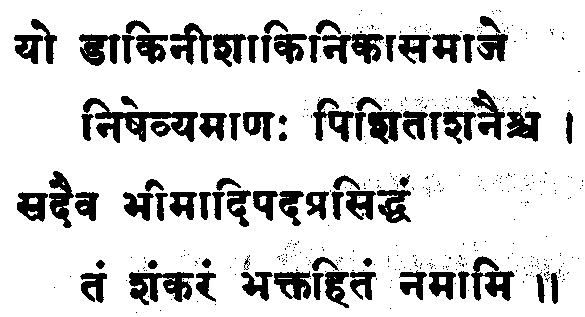Bhimashankar in Maharashtra is an ancient shrine,
enshrining Bhimashankara one of the 12 Jyotirlingas
of Shiva. Bhimashankar is located in the village of Bhavagiri 50 km north
west of Khed, near Pune. It is located 110 km away from Pune in the
ghat region of the Sahyadri hills. Bhimashankar is also the source of the
river Bhima, which flows south east and merges with the Krishna river
near Raichur. The other Jyotirlinga shrines in Maharashtra are Tryambakeshwar
and Grishneshwar.

This temple is closely associated with the legend
of Shiva slaying the demon Tripurasura associated with the invincible
flying citadels Tripuras. Shiva is said to have taken abode in the Bhima
form, upon the request of the Gods, on the crest of the Sahyadri hills, and the sweat that
poured forth from his body after the battle is said to have formed the Bhimarathi river.
The Temple: The Bhimashankara temple
is a composite of old and the new structures and is built in the Nagara
style of architecture. It is a modest temple yet graceful temple and it dates back to mid
18th century. The shikhara of the temple was built by Nana
Phadnavis. The great Maratha ruler Shivaji is
also said to have made endowments to this temple to facilitate the carrying out, of
worship services. As with other Shiva temples in this area, the sanctum is at a lower
level.
Although the structure here is fairly new, the shrine
Bhimashankaram (and the Bhimarathi river) have been referred to in literature dating back
to the 13th century CE. Saint Jnaneshwar is said to have visited Tryambakeshwar
and Bhimashankar.
Other temples and shrines: There is a
shrine to Kamalaja near the Bhimashankara temple. Kamalaja
is an incarnation of Parvati, who aided Shiva in his battle against Tripuraasura.
Kamalajaa was worshipped with offerings of lotus flowers by Bhrama. Shaakini
and Daakini the Shivaganas who helped Shiva in the battle against the
demon are also honored and worshipped here.
The Mokshakund thirtha is located
behind the Bhimashankara temple, and it is associated with the rishi Kaushika.
There are also the Sarvathirtha, the Kusharanya thirtha
where the Bhima river begins to flow eastward, and the Jyanakund.
Worship: Three worship services are
offered each day. Mahashivratri is a season of greate festivity here.
It is to be noted that the Rudrasamhita
sloka in its reference to Bhimashankar says, Daakine Bhimashankaram.
There is also a Bhimashankar temple at Bhimapur hill
near Guwahati in Assam where legend holds that a demon by name Bhima who inflicted havoc
upon the beings in the area, was slain by Shiva, as he tried to kill a king enaged in
Shiva worship. This is a legend similar to that where Shiva emerged from a Shivalingam to vanquish Yama
the Lord of death. The Shiva Purana and the Koti Rudra Samhita refer to Bhimashankar
temple in the Kamarupa country. However there is also a reference to
Mount Sahya, where it is stated that Shiva - Bhimashankara appeared on
the Sahayadris.
There is also a Bhimashankara temple at Kashipur
near Nainital, which was referred to as Daakini country in ancient days.
It is believed that Bhima the Pandava prince was married to Hidamba, a
Daakini here. Mahashivaratri is celebrated in great splendour here too. This temple also
has shrines to Bhairavanath and Devi, and a temple tank by name Shivaganga.

See Also:
Tryambakeshwar
Tripura Samhaaram
The story of Markandeya
